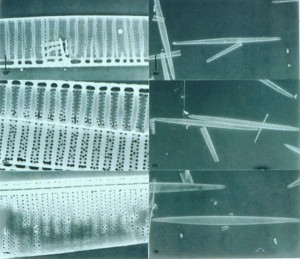An ongoing toxic algal bloom off the U.S. West Coast was first detected in California in May 2015 and soon stretched to Alaska. Formed by the harmful algae Psuedo-nitzschia, this unusually long-lasting bloom is the largest bloom in the past 15 years. Record-setting concentrations of domoic acid, the neurotoxin produced by the bloom, have shut down several crab, shellfish, and other fisheries in California, Washington, and Oregon, costing tens of millions of dollars in lost revenue.

To help congressional representatives understand the event and impacts to their constituents, science and resource management experts met with congressional leaders and staff last month for an informational briefing, arranged by NCCOS, at the Cannon House Office Building.
Daniel Ayres from the Washington Department of Fish & Wildlife described the shellfish and crab monitoring his department does to protect human health and the economic impacts of closures to recreational and commercial fisheries. Ayres also described how harmful algal blooms can affect marine mammals. Dr. Raphael Kudela from the University of California Santa Cruz and Dr. Vera Trainer from the NOAA National Marine Fisheries Service shared their understanding of the role of water temperature and nutrients in bloom formation and persistence, and what triggers the onset of toxicity in blooms. The advisers also presented information on the interaction of the “warm blob,” drought, low snow pack, coastal currents, and upwelling.

For NCCOS’s past response to the West Coast harmful algal bloom event click here.
